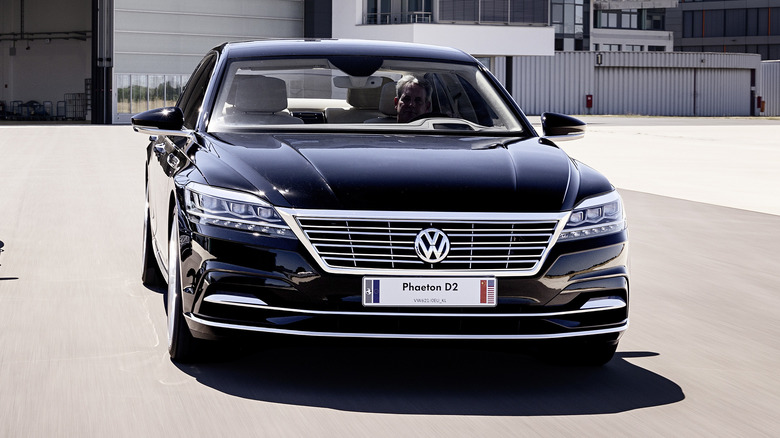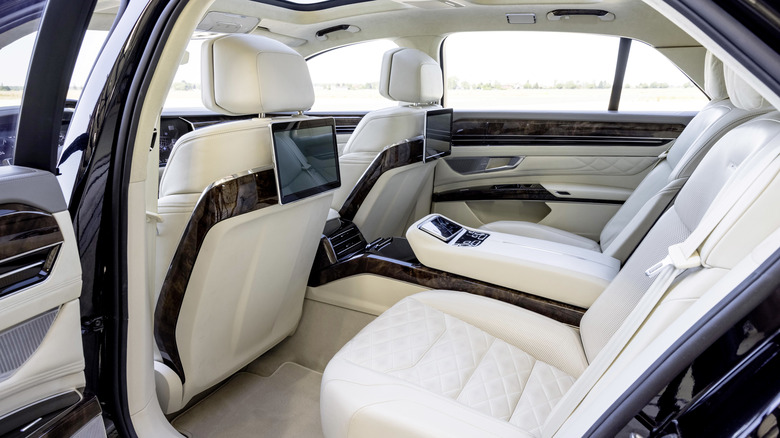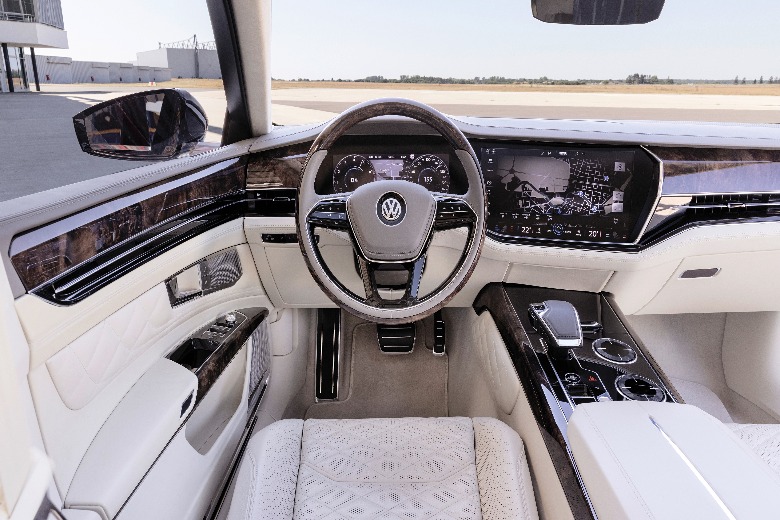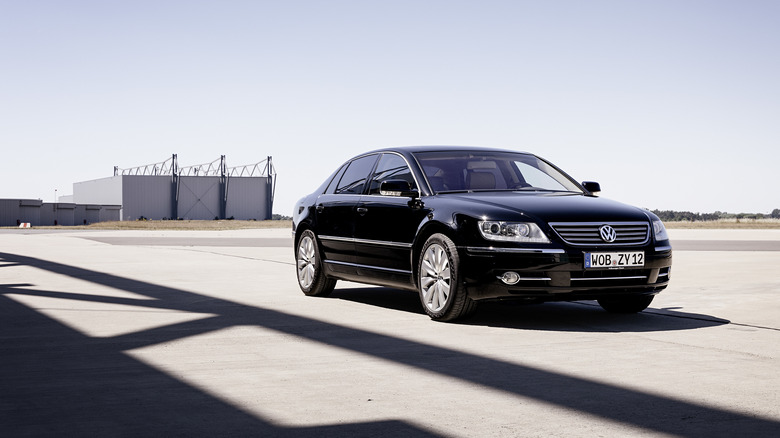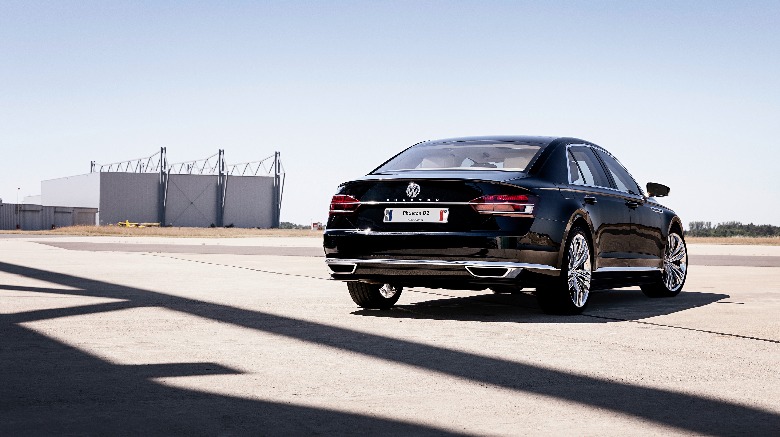VW Reveals The Super-Luxury Sedan Its Electric Cars Killed
In 2016 Volkswagen made a strategic shift that drastically changed its vehicle output. The company's venture into the luxury market, the VW Phaeton, was shelved after 14 years and the people's car company decided to focus its resources on the growing electric vehicle market. Around the same time, Volkswagen unveiled plans for their electric ID range at the Paris Motor Show. Over the past six years, the ID range has moved far beyond a prototype. You can now grab an electric answer to the Golf, an SUV, and even an incredibly green attempt at a VW Camper.
The German auto giant is quite ambitious about what it wants to achieve in the EV market. Volkswagen was quite clear about its desire to dislodge Tesla from the EV throne, and almost achieved that goal last year. Elon Musk's company sold a total of 936,174 electric cars, while VW was not far off that amount with global sales of 757,994. Musk may have fired a shot back when he decided to open a Tesla Gigafactory in Berlin, just an hour from Volkswagen's headquarters. Unfortunately for the Germans, Warren Buffet Backed EV manufacturer BYD may have just taken the EV World Title. Still, the news is more likely to spur both Tesla and Volkswagen on than discourage them.
Volkswagen is no stranger to luxury
Although it may be more closely associated with hatchbacks like the Golf, or mid-range saloons like the Passat, Volkswagen actually has a direct connection to some of the most expensive consumer cars on the planet. The company directly owns a number of luxury brands, including Audi, Bentley, Lamborghini, and Porsche. Its cars have overlapped with Audi's in particular, with the aforementioned Passat traditionally sharing a lot of parts and features with the Audi A6.
But the Phaeton was Volkswagen's official attempt to break into the luxury market under their own flag. The original Phaeton made its debut in 2012, offering what Volkswagen describes as "luxury comfort, innovative drive systems, and pioneering finish quality." Like most luxury cars, the Phaeton was large — measuring 16.6 feet long, 6.2 feet wide, and 4.7 feet high. The interior of the original Phaeton is described by VW as a "mobile lounge." Surfaces were clad in "chrome, wood veneer, and leather," while the gear shift was compared to a "thrust lever on a motor yacht." Like double glazing, the thick glass panes kept out unwanted road noise, while the optional Dynaudio sound system pumped in high fidelity sounds of the occupant's choice.
In terms of performance, the Phaeton debuted with a set of options. Two gasoline engines were available, a 3.1-liter V6 capable of producing 238 horsepower, and a 6-liter, 414 horsepower, W12. A 308-horsepower turbo diesel was also an option, for people who trusted Volkswagen's emissions standards. The engine choices changed over the years, but the underlying quality remained. The vehicle also received periodic design changes, as tastes change. Then during the fallout of the emissions scandal, the Phaeton D2 was announced, promising to give the luxury line a futuristic overhaul.
What the Phaeton D2 could have been
In 2015, a new take on the Phaeton was announced — the Phaeton D2. It was billed as having a more "emotional" design than its predecessors, a "pure electric drive with long-distance capability," "more communication options," and "semi-autonomous driver-aid systems." It was assumed the new luxury car would be on the market in 2017 or 2018, but it didn't get there at all.
Volkswagen says a single driveable one-off model of the Phaeton D2 was produced. The prototype was based on designs by VW's Head of Exterior Design Marco Pavone and its Head of Interior Design Tomasz Bachorski. VW's press office says the pair's styling was selected due to its "sporty and flat contours and high-quality interior." The prototype was also based on Volkswagen's Modular Standard Drivetrain Platform (MLB). The Porsche-designed platform develops a standard for the company's longitudinal engine, front, and all-wheel drive vehicles, allowing parts to be used interchangeably regardless of the car's dimensions. Adopting the platform drives down costs and improves efficiency.
Looking back, Bachorski seems proud of his work and points out that although the D2 never was, it still left a legacy. "The fact that the Phaeton D2 was ahead of its time can be seen today in features such as the curved display, which was planned for the Phaeton successor and which was launched on the market in 2018 in the Touareg's Innovision Cockpit," said Bachorski.
Although the prototype seemed to take the original Phaeton forwards into the future, and many of its features would appear on other VW cars, a full D2 release was not to be. After viewing the drivable model, VW's Supervisory Board decided not to go ahead with the Phaeton D2, and focus their efforts on "aligning Volkswagen for electric mobility" instead.
